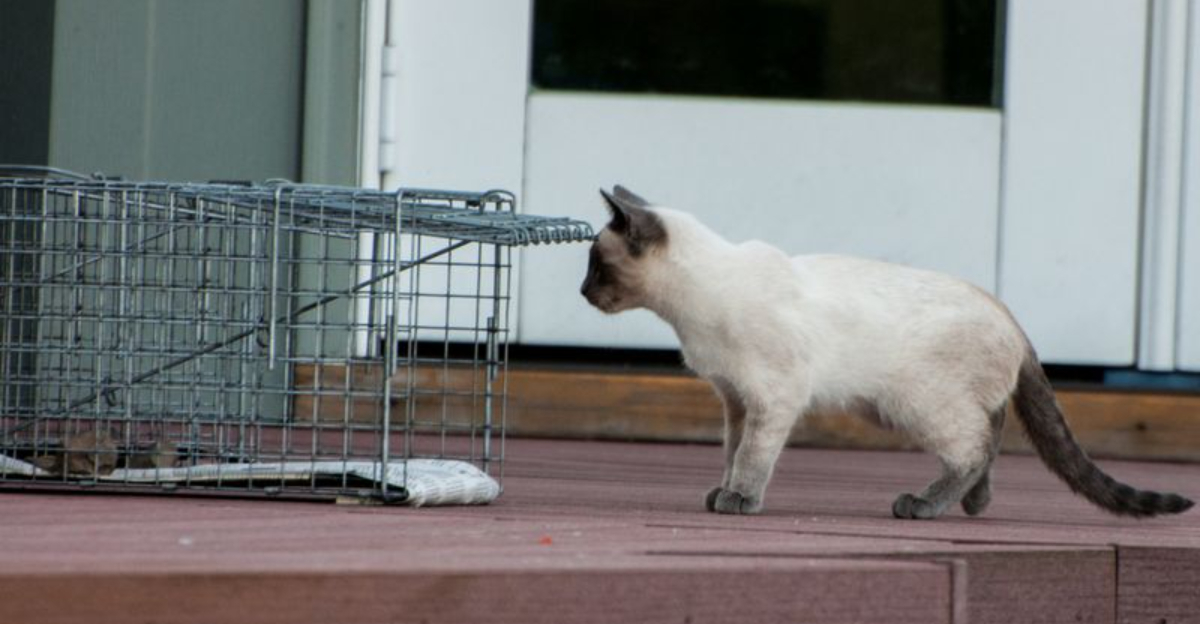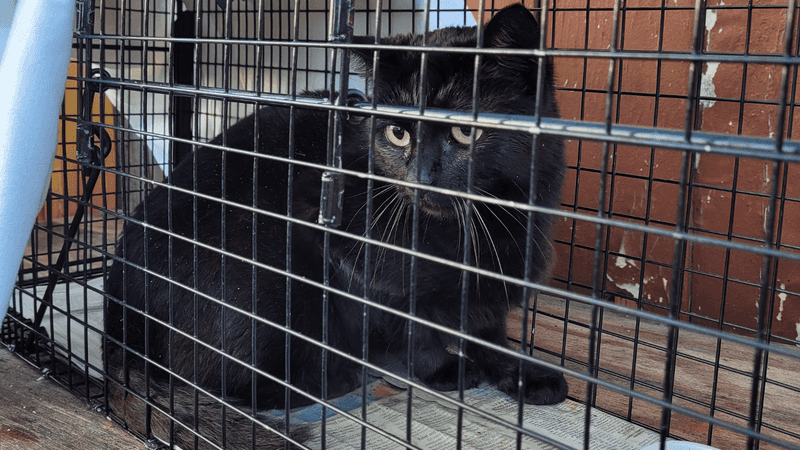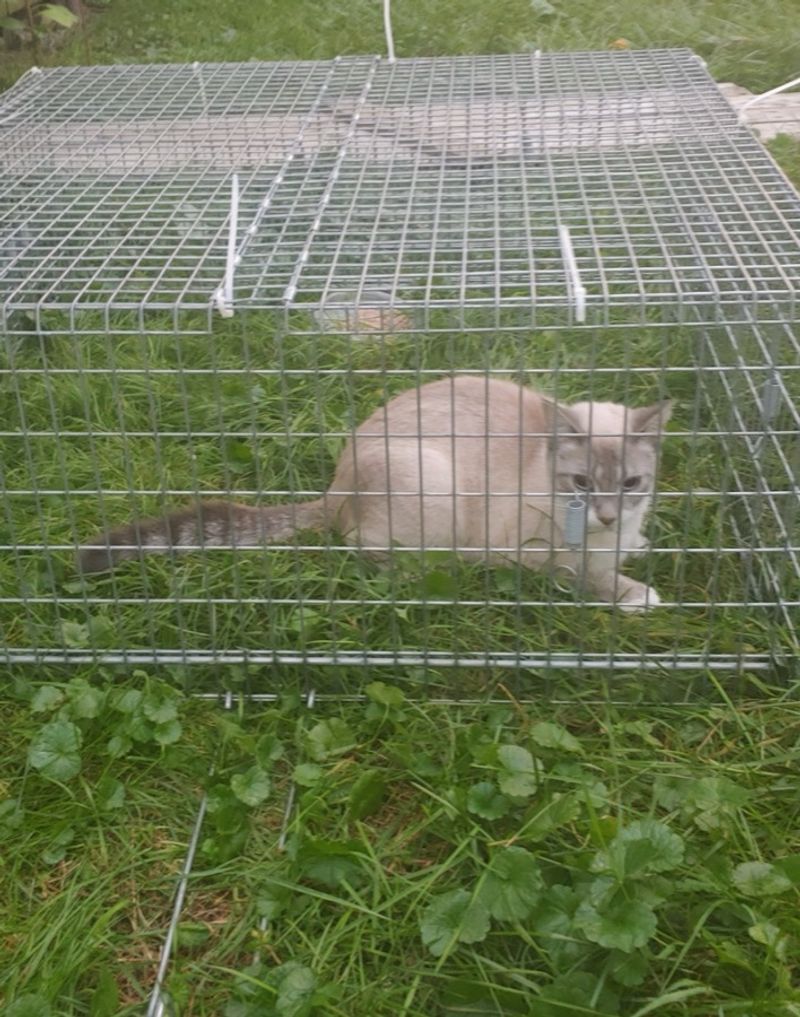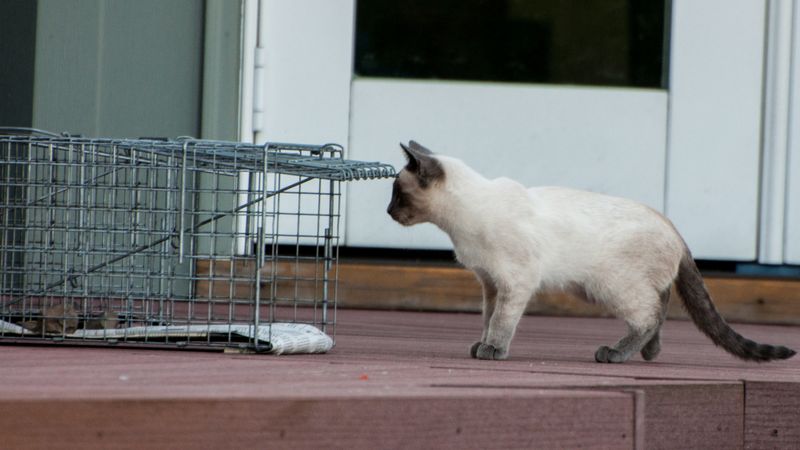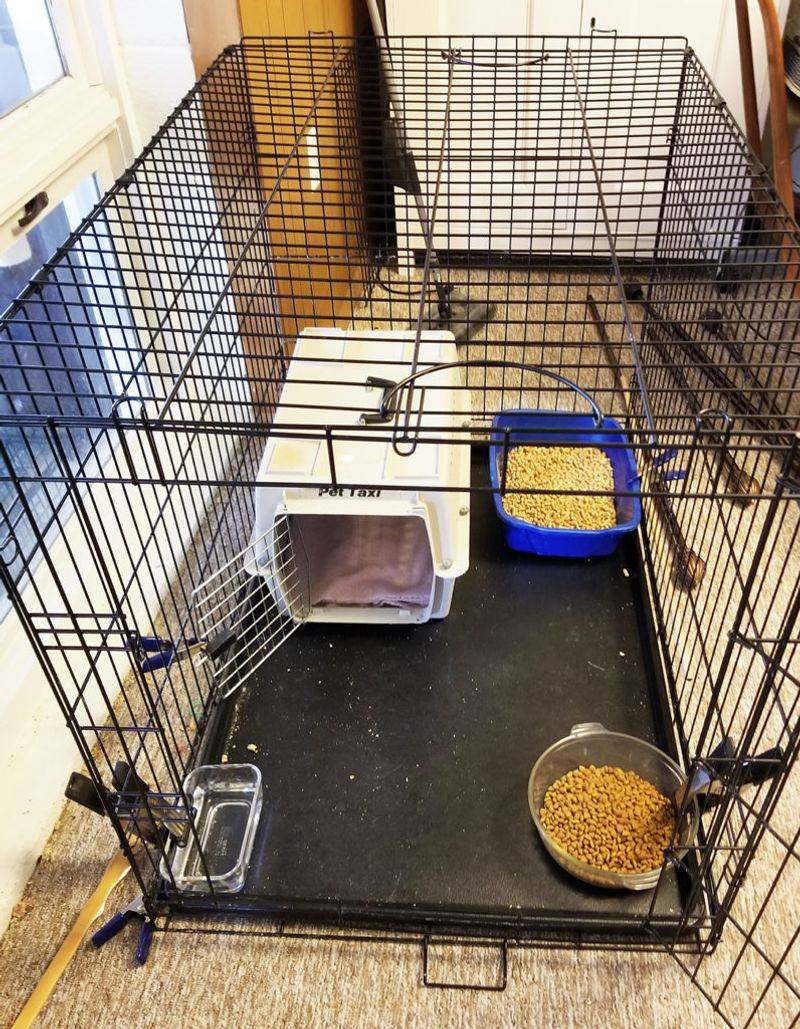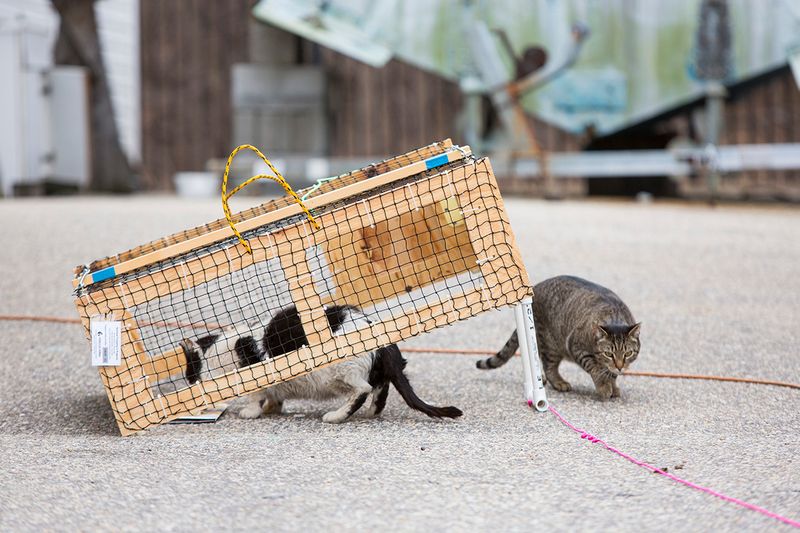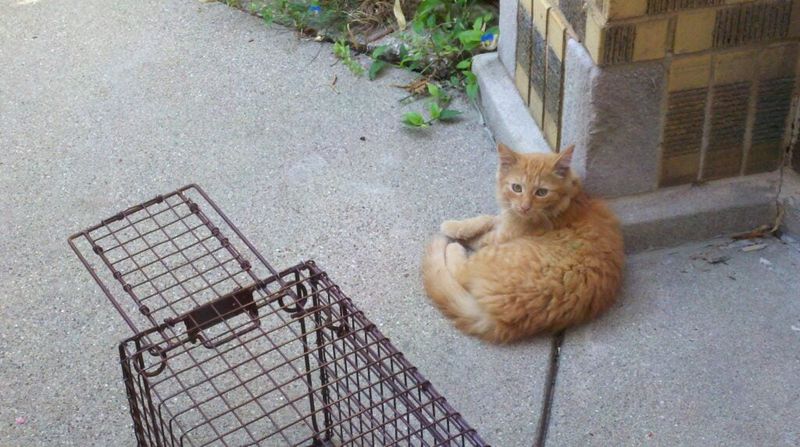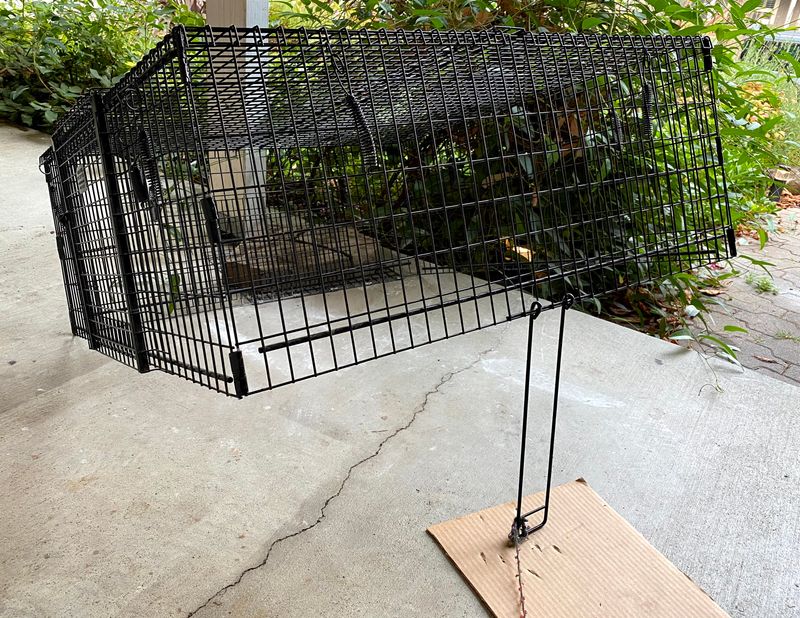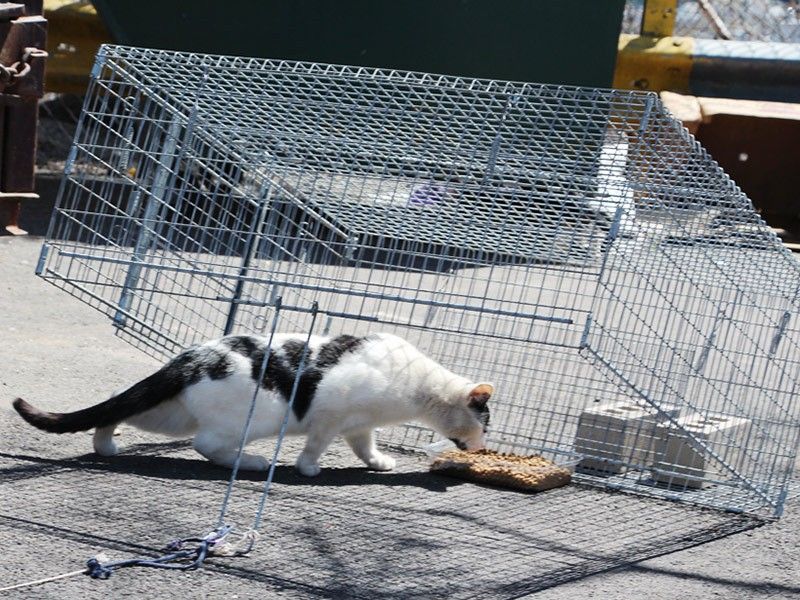📖 Table of Content:
Trapping feral or stray cats is a vital part of humane population control, rescue efforts, and ensuring the health of community cats. Among the various tools available, the drop trap stands out as one of the most effective methods for catching even the most trap-savvy felines. Its large size and open design allow cats to walk in naturally, making it an excellent choice when traditional box traps fail.
However, successfully using a drop trap requires careful planning, proper setup, and a deep understanding of cat behavior. From choosing the right bait to ensuring a safe transfer, every step plays a crucial role in the success of the operation. For both beginners and experienced trappers, refining your technique can drastically increase your chances of a safe, efficient capture.
In this article, we break down the 8 key steps to effectively set up and use a cat drop trap. Each step includes insights, pro tips, and guidance to ensure you’re well-prepared for your next TNR (Trap-Neuter-Return) or rescue mission. Whether you’re working solo or with a team, these steps will help you trap smarter, not harder.
1. Choose the Right Location
Selecting a strategic location is the foundation of a successful drop trap setup. Ideally, choose a spot where the target cat is already comfortable eating or resting. Cats prefer quieter environments with low human activity, so avoid placing traps near busy roads or loud machinery. Shady areas or those with natural cover like shrubs can also make the trap feel safer. It’s also important to ensure the ground is level and free from debris to prevent tipping or instability. Some trappers find success by placing traps near known feeding stations or close to colonies they’re managing. Keep in mind that visibility for the trapper should also be considered—somewhere you can monitor without being seen. If the cat doesn’t feel secure, it simply won’t go in.
2. Get the Right Equipment
Having the correct gear makes the difference between a clean capture and a missed opportunity. A quality drop trap should be lightweight but sturdy, easy to transport, and big enough to fully enclose the cat. Most drop traps come with a string or pole mechanism and a prop stick for manual control. It’s equally essential to have a transfer cage or box trap ready for post-capture handling. Don’t forget a trap divider or “guillotine door” to guide the cat during transfer. Before your trapping day, inspect all your gear—check for bent wires, broken mesh, or sticky latches. Faulty equipment not only risks escape but can also injure the cat or cause delays. Preparation ensures confidence when the moment of truth arrives.
3. Pre-Bait the Area
Before attempting the actual trap, getting the cat familiar with the setup can dramatically increase success. Place food underneath the trap for 1–2 days with the trap propped open and unarmed, allowing the cat to investigate it freely. This technique builds confidence and reduces fear of the structure, especially for cats that have had negative experiences with traps. Use the same bait each day to establish routine and trust. Observe from a distance during this process to understand how the cat approaches and interacts with the trap. If the cat refuses to go fully inside, try repositioning the trap slightly or using a more tempting food. Consistency and patience during pre-baiting will pay off in smoother trapping later on.
4. Prepare the Transfer Setup
Even after a successful trap drop, transferring the cat to a transportable carrier can be the trickiest part. Start by having your transfer cage pre-positioned nearby, lined with newspaper or a towel for comfort. Use a trap divider to gently coax the cat from the drop trap into the transfer unit—this reduces stress and keeps both the cat and trapper safe. Some trappers find that covering the traps with a towel helps calm the cat during this transition. Keep all necessary tools within reach so you don’t need to leave the trap unattended. Secure all doors and check latches before starting the transfer process. If the cat resists, take a short break before trying again to minimize panic. Calm, deliberate actions here are crucial.
5. Use the Right Bait
Choosing the correct bait can be the difference between trapping success and being ignored. Highly aromatic foods like tuna, sardines, or mackerel are usually irresistible to cats. Place the bait in a small container or directly on a paper plate at the center of the trap. Avoid overfeeding the cats prior to trapping day so that they’re more motivated by food. To increase appeal, warm the bait slightly or drizzle tuna water around the trap’s perimeter. Some trappers even use a food trail leading into the center to lure hesitant cats inside. Remember to refresh bait every few hours if left out too long, especially in hot weather. A well-baited trap speaks louder than any trick or gadget.
6. Stay Hidden and Quiet
Once the trap is set, your role shifts to that of an observer. Position yourself behind a barrier, in a vehicle, or at a distance where you can still see the trap but remain unnoticed. Movement and noise can quickly scare off a cautious cat, so silence and stillness are key. Keep your phone on silent and avoid unnecessary rustling or talking. Use binoculars if needed to get a better view without being close. If you’re working with a team, agree on hand signals or quiet communication to avoid alerting the cat. The less they associate the trap with human presence, the more likely they are to enter. Patience here often means the difference between failure and a clean catch.
7. Drop the Trap at the Right Moment
Timing the drop requires focus and quick reflexes. Wait until the cat is fully inside and clearly engaged with the bait—this usually means all four paws are off the ground and within the trap boundaries. Avoid dropping too soon, which may scare the cat or lead to partial capture. Pull the cord steadily, not with a jerk, to ensure a smooth and centered fall. If the cat is startled and bolts before the drop, stay calm and reset quietly for another try. Never chase or spook the cat—it could make future attempts harder. When done right, the drop should be clean, quiet, and secure. Confidence and a steady hand are your best tools in this moment.
8. Transfer the Cat Safely
Once trapped, your priority becomes safety—for both the cat and yourself. Begin by draping a towel or blanket over the trap to help calm the animal and reduce visual stimuli. Bring the transfer trap flush against the drop trap door, securing both traps to prevent gaps or escape routes. Using a divider or gentle pressure, guide the cat into the transfer unit. Always wear gloves and stay calm, as panic can escalate the situation. Once the cat is inside, immediately secure all doors and double-check latches. Label the trap with details like date, location, and gender if known. A calm, well-executed transfer ensures the cat is ready for transport to a vet or holding area without trauma.
